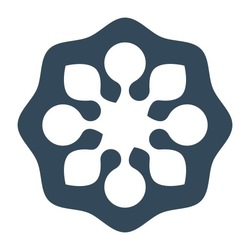Mission Complete: La Mission Haut-Brion 1928–2011
Château La Mission Haut-Brion
Pessac-Léognan Red Bordeaux Blend 1975
The 1975 La Mission Haut-Brion has been hailed in some quarters as a high point for the estate in the Seventies. My own experience has been one of inconsistency, especially compared to the reliable and, in my mind, superior 1978. According to a half-dozen or so tasting notes from 2000 onward, the 1975 was always robust, dense and nearly impenetrable. One bottle at the vertical in 2008 finally lived up to high expectations, but a follow-up two years later felt charmless. This bottle is conspicuously deep in hue. The nose is backward at first, eventually revealing blackberry, iodine and light licorice scents; later, a touch of gaminess creeps in. The palate is full-bodied and full of sinew, with thick tannins framing the multilayered, ferrous black fruit. This is huge in terms of grip, and almost brutish toward the finish. It’s impressive in stature, but the 1978 possesses greater nuance and more panache. Tasted at a private dinner in Hong Kong. Neal Martin, Vinous, September 2021)
— 4 years ago
Château La Mission Haut-Brion
Pessac-Léognan Red Bordeaux Blend 2005
The 2005 La Mission Haut-Brion is a wine that I have had the pleasure of tasting on several occasions. The most recent bottle, included in a 2005 horizontal, puts it in a very favorable light even against strong competition. The bouquet bursts from the glass with intense blackberry, cedar and tobacco scents, plus background aromas of fig and damson, as you would expect from a warm summer. The palate is structured, yet the Merlot content (at 69%, the highest in many years) renders this Pessac-Léognan much more pliant than others from this vintage. A mélange of red and black fruits vie for attention, followed by warm gravel and black olives. Quite rich and yet not grippy; with decanting, you could broach this now, though personally I would prefer to leave it for several more years. Outstanding. (Neal Martin, Vinous, September 2021)
— 4 years ago
Château La Mission Haut-Brion
Pessac-Léognan Red Bordeaux Blend 2000
The 2000 La Mission Haut-Brion is a vintage that I have not tasted for several years. At age 21, it has retained its youthful nose of vivid black cherries, wild strawberry and iodine, and shows less of the black olive tapenade element that I noticed in its youth. The palate is medium-bodied with lithe tannins that belie that backbone of this La Mission. Beautifully balanced and quite peppery, with fine salinity, it is less sauvage than many other millennial Bordeaux, leading to a succulent, sensual finish. This is only just beginning to show what it is capable of. 13.4% alcohol. Tasted at the château with Jean-Philippe Delmas. (Neal Martin, Vinous, September 2021)
— 4 years ago
Château La Mission Haut-Brion
Pessac-Léognan Red Bordeaux Blend 1955
The 1955 La Mission Haut-Brion is not only one of the best vintages ever made at the estate, but also represents one of the top five Bordeaux wines of the 20th century. This was my fourth bottle and to give it a perfect score was easy. Clear in color, it sports a bouquet that is unbelievably intense and yet refined, delivering a kaleidoscope of aromas: black fruit, crushed rock, freshly rolled tobacco and shaved black truffles (but not the aniseed note I noticed in previous examples). The palate is exquisitely poised, brimming over with tension and energy undimmed by the passing years, and symmetrical on the finish. Hints of blood orange linger tantalizingly on the aftertaste. You almost laugh at the unequivocal perfection. Tasted at the La Mission Haut-Brion dinner at Amuse Bouche in Hong Kong. (Neal Martin, Vinous, September 2021)
— 4 years ago



Delectable Wine

Follow to learn about our favorite wines & people.
The 2007 La Mission Haut-Brion is one of the great successes of a vintage given the cold shoulder by consumers on initial release. It has an ebullient bouquet of vivid dark berry, warm gravel and undergrowth scents that are complex and beautifully defined. The palate is medium-bodied with fine tannins, crisp acidity, a precise structure and superb tension on the finish. (Neal Martin, Vinous, September 2021)
— 4 years ago